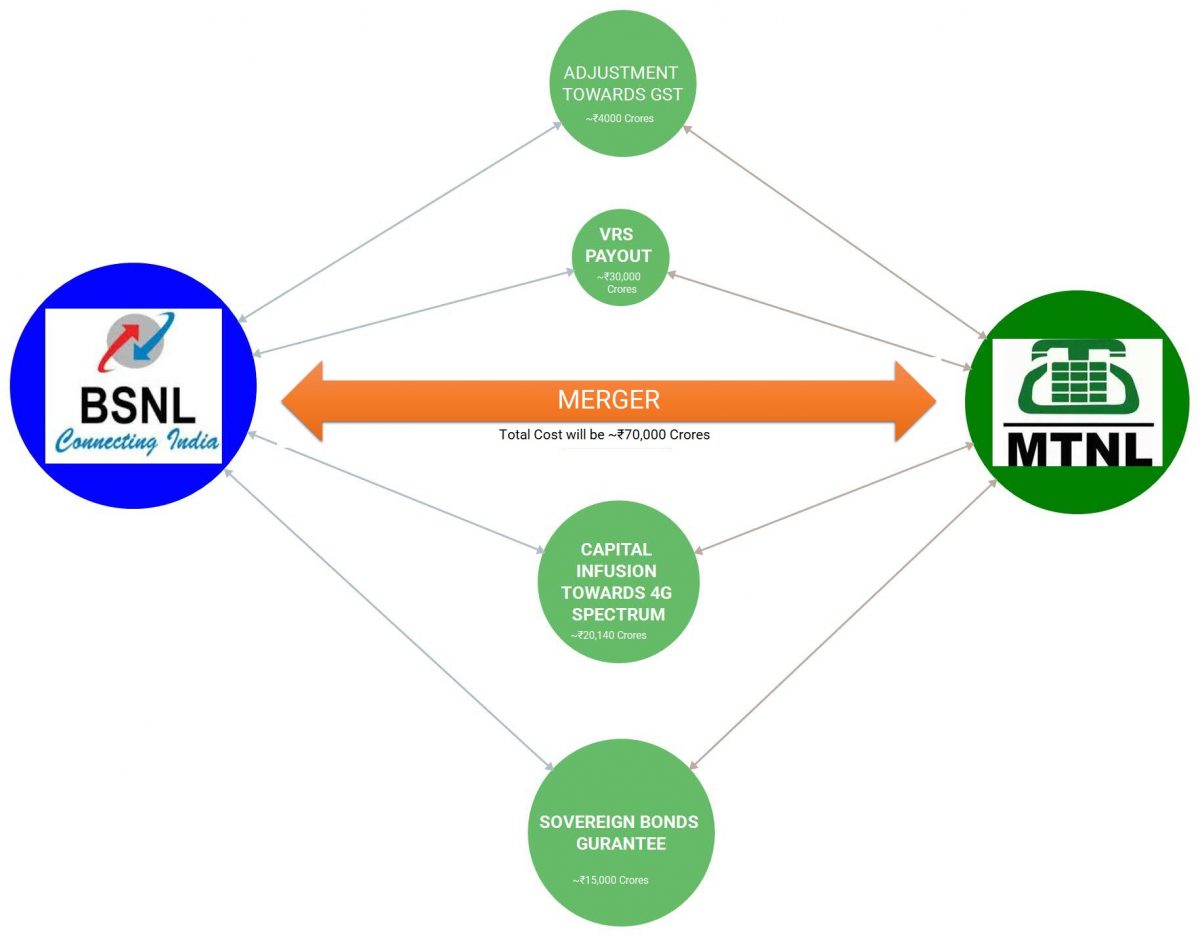Attempt to remain relevant by merging BSNL and MTNL
In what seems to be last attempt, government has finally decided to revive by merging the two loss-making state-owned telecom companies Bharat Sanchar Nigam Ltd (BSNL) and Mahanagar Telephone Nigam Ltd (MTNL). The two telecom companies have been bleeding and their subscriber base dwindling as competitors such as Bharti Airtel, Vodafone Idea and Reliance Jio had rolled out pan India 4-G services and cut prices on voice and data.
MTNL, which is largely present in cities such as Delhi and Mumbai, will act as a unit of BSNL until the merger is completed. While MTNL is listed, BSNL is not listed. The two companies have a total debt of Rs 40,000 crore. The merger bill will be about Rs 70,000 crore which includes voluntary retirement scheme (VRS), capital infusion, goods and service tax and bond guarantee. The Centre will raise Rs 15,000 core through sovereign bonds to strengthen the two-state run telecom companies and the government will monetise telecom assets worth of Rs 38,000 crore.
The government is offering voluntary retirement scheme (VRS) to the employees of the two companies, aged 50 years and above. The cost of the VRS, which is likely to be around Rs 17,000 crore, will be borne by the government through budgetary support. The government expects to complete the merger process by 24 months. With these measures, the government expects that BSNL will come out of the losses by 2023-24 while MTNL will be back to profits in 2025-26.
Given the precarious financial position of the two companies, the new proposal of the government will be acceptable to the company's employees. The two companies together employ around two lakh people, a number that the government will eventually reduce through VRS. In contrast, leading private sector telecom companies such as Bharti Airtel employs around 17,000 people and Vodafone-Idea employs about 12,500 people. In fact, the VRS scheme, about 77,000 people in BSNL have opted and in the case of MTNL, 13,532 employees have opted for the VRS scheme till November 20.
Since the time the telecom sector was opened for private sector participation in 1995, the role of BSNL and MTNL started to diminish. In just over two decades, the mobile phone revolution has catapulted India to the second rank in wireless technology. The stifling competition which followed a tariff war started with the entry of Reliance Jio in September 2016. It saw weak private sector companies merging or exiting the business.

Synergy in the merger
Given the fact that the combined customer share of BSNL-MTNL in the mobile market is a little over 10% and the two companies have 54% market share in wired broadband, the merger is expected to result in gaining a competitive edge in terms of technology, cost optimisation, market share and product innovation. The merger decision includes allotment of critical spectrum to the two companies for offering fourth-generation wireless services, including broadband.
The government will infuse Rs 20,00 crore of capital while also bearing the related GST levy of Rs 3,600 crore. The government aims to leverage the spectrum allotment to make BSNL and MTNL compete effectively in the domestic telecom market. The state-run BSNL operates on just 2G/3G technology and is yet to enter the 4G era. The government is making efforts to give an administrative allocation of 4G spectrum to BSNL pan India so that it can compete with private players.
As the two companies have been operating in isolation without any degree of competition, the merger will hopefully make the combined entity competitive and face the market challenges. However, changing the work culture of the merged entity will be a daunting task to make the merger work. The big issue that the government will have to tackle is the large workforce as the employee cost of BSNL is 75% and that of MTNL is 87% of total income.
At a time when there is fierce competition amongst all the three private sector telecom companies, survival of BSNL-MTNL will depend on how technology-efficient and customer-friendly the merged entity becomes. It also will have to augment the enterprise business, such as offering optical fibre, towers and network services to private sector companies. If the merger works, then it will provide a tough competition to the private sector telecom companies who have waged a price war amongst themselves in order to increase subscriber base. A successful revival of BSNL and MTNL will have a far-reaching implication for the industry because the three surviving private players are saddled with Rs 75,000 crore of dues due to loss of a legal challenge. The merger will also send a positive message to the markets that the Centre is keen to recoup the loss-making public sector undertakings. Ideally, the government should delist MTNL before the merger gets into the final lap... Continue to read.!!
Comments
Post a Comment